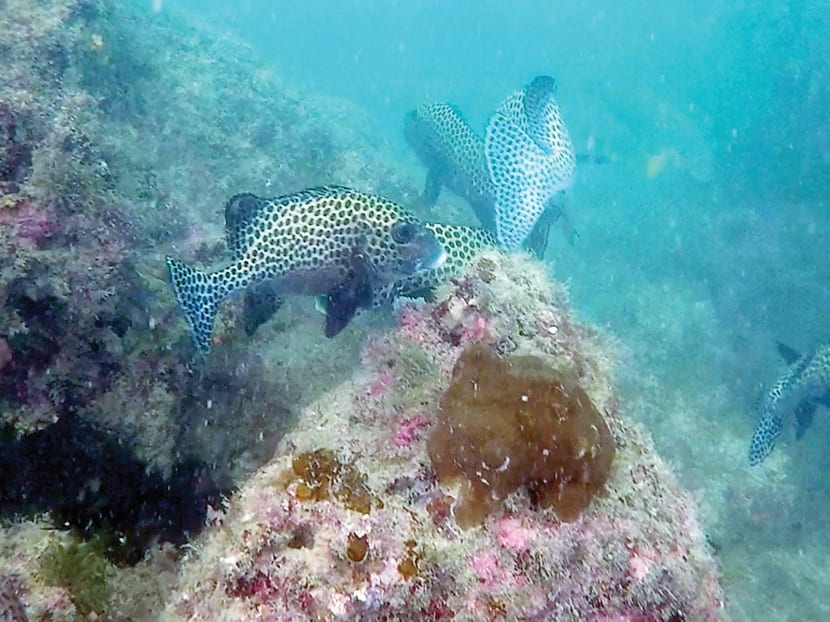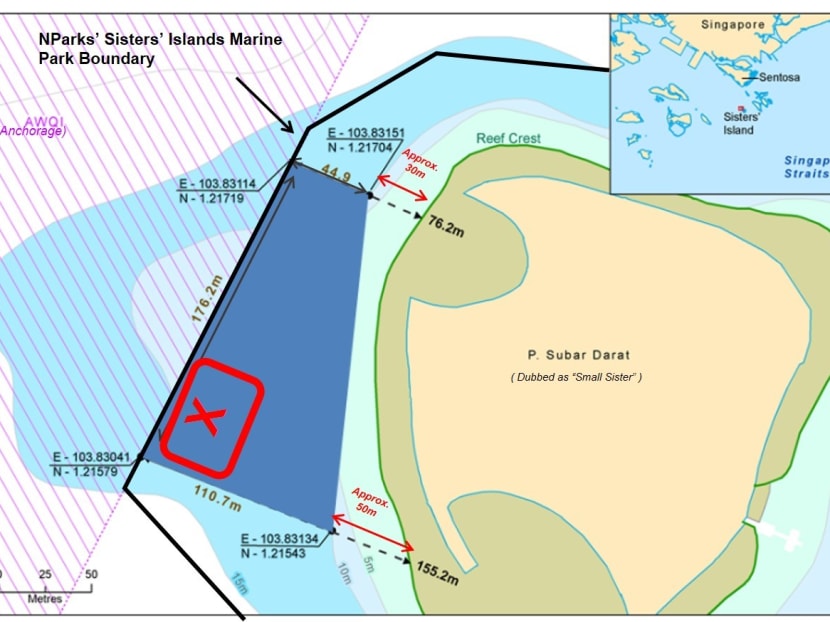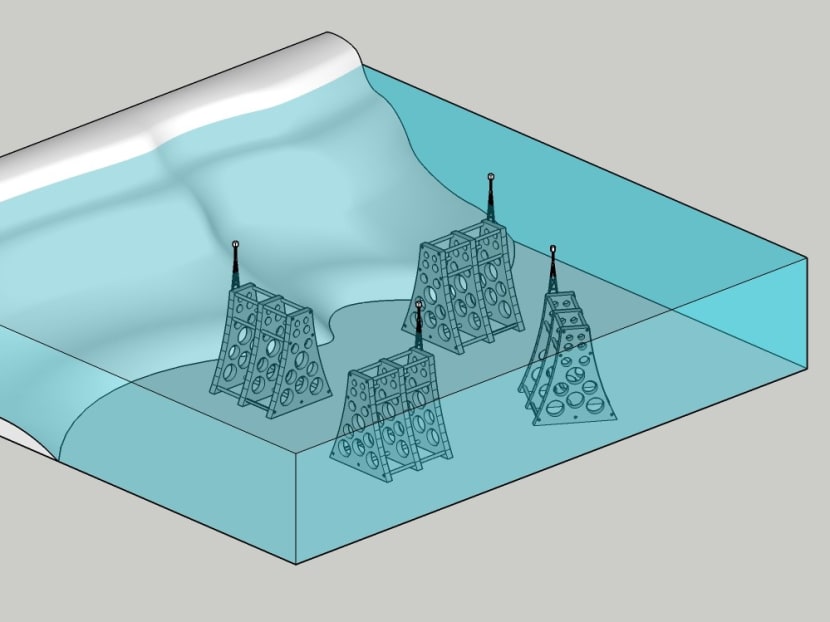Sisters’ Islands Marine Park to get Singapore’s biggest artificial reef by the year end
SINGAPORE — Sisters' Island Marine Park will be home to the Republic's largest artificial reef by the end of this year.

Sisters' Islands Marine Park is home to a variety of marine life such as sea stars, hard and soft corals and clown fishes.
SINGAPORE — Sisters' Island Marine Park will be home to the Republic's largest artificial reef by the end of this year.
The project is jointly launched by JTC and the National Parks Board (NParks) to support Singapore's Year of Climate Action 2018 on Thursday (May 17). It will see the marine park get an additional 500 sq m of reef area to support existing habitat enhancement and reef restoration efforts to conserve marine biodiversity.

The red-boxed area is where the first artificial reef structures will be placed. Source: JTC.
The artificial reef, covering an area slightly bigger than a basketball court, will be formed by pre-fabricated concrete structures about 10m tall that will be sunk in the waters of the park.
Occupying the entire water column from sub-surface to the seafloor, the structures, which are the size of three-storey terrace houses, are designed to provide numerous and unique habitat niches for a wide variety of marine life.
Recycled rocks will also be attached to their surfaces to increase surface complexity and promote the growth of coral, which will in turn attract fish and other sea life.
The artificial reefs are also designed to be self-sustaining, requiring minimal or no maintenance.
It is hoped that the seafloor, which is currently mostly bare with sandy substrate, can turn into a thriving marine ecosystem.
The structures, which would sit on the seabed without piling or major works, are conceptualised to minimise impact to the existing marine environment.

Top view of the artificial reef structures in water (not drawn to scale). Source: JTC
The project's proposed site was chosen in consultation with relevant government agencies, academic experts and members of the Friends of the Marine Park community.
JTC, which is marking its 50th anniversary this year, is contributing its engineering expertise to support NPark's work in marine reef conservation.
And JTC and NParks' aim is to double the artificial reef areas created at Sisters' Islands to 1,000 sq m by 2030.
They hope the artificial reef would also provide opportunities for various research initiatives to be implemented as well as serve as test beds for new technologies to study coral reef resilience.
For example, they could be a platform for transplanting corals that have been grown in the nursery, and some of these may include locally rare species, such as Gardineroseris planulata.
While the public can access dive trails at the marine park during designated dive windows, NParks said there are no plans to include the artificial reef into the trails, as they need areas that are managed and monitored, for the healthy growth of corals.
Coral at the marine park have been bleaching due to climate change, and can only be accessed only during designated dive windows to protect the reefs.
Addressing concerns that artificial reefs may cause pollution to seawater and their ineffectiveness in increasing biodiversity, Mr John Kiong, deputy director of JTC's Engineering and Operations Group, said the main material used, concrete, has been shown to support marine biodiversity.
Furthermore, coral reef scientist Chou Loke Ming from the National University of Singapore said that while it is true that artificial reefs can attract fishes from other coral reefs initially, after a few years, the fishes will redistribute and establish their own populations on various reefs.
"So (the presence of artificial reef) does not lower the population on the natural reefs," Professor Chou added.
Such active intervention is needed to sustain marine biodiversity, said Dr Karenne Tun, director (coastal and marine) at NParks' National Biodiversity Centre.
Citing an example of how researchers discovered a rare species of coral not seen in local waters for a very long time in 2006, despite active monitoring, it bleached and died in 2010.
"That was when we realised it is not just about monitoring, it is about active intervention," Dr Tun said.
The project is launched in conjunction with NPark's Biodiversity Week. For more information on the series of events, visit www.nparks.gov.sg/biodiversityweek.






